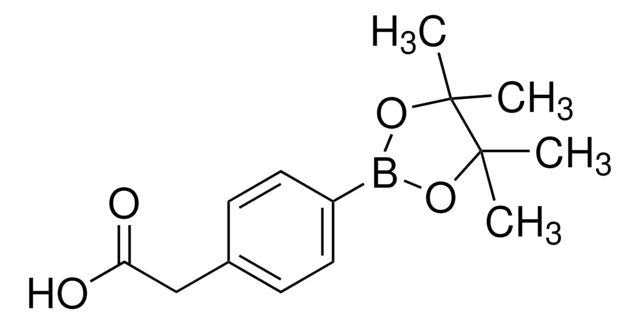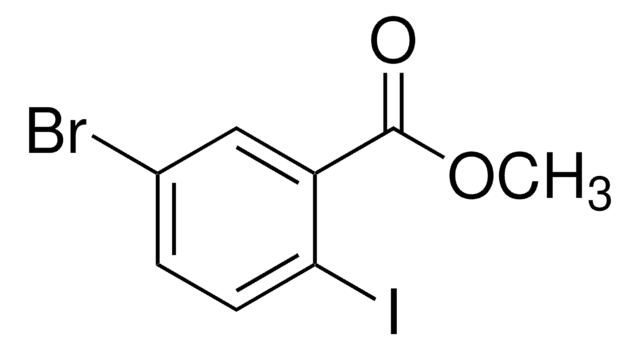697095
2-Chloropyridine-3-boronic acid
Synonym(s):
(2-Chloro-3-pyridyl)boronic acid, (2-Chloropyridin-3-yl)boronic acid, Dihydroxy(2-chloro-3-pyridyl)borane
About This Item
Recommended Products
form
powder
mp
121-134 °C
functional group
chloro
storage temp.
2-8°C
SMILES string
OB(O)c1cccnc1Cl
InChI
1S/C5H5BClNO2/c7-5-4(6(9)10)2-1-3-8-5/h1-3,9-10H
InChI key
VRDAOVQZVXYRNH-UHFFFAOYSA-N
Looking for similar products? Visit Product Comparison Guide
Application
- Synthesis of Et canthinone-3-carboxylates from Et 4-bromo-6-methoxy-1,5-naphthyridine-3-carboxylate via a Pd-catalyzed Suzuki-Miyaura coupling and a Cu-catalyzed amidation reaction
- Preparation of arylmethylpyrrolidinylmethanols and amine derivatives via reaction with MIDA followed by Suzuki reaction with halides or amination with amines
- Preparation of arylazabicyclooctane derivatives as potential arginine vasopressin receptor antagonists
- Regioselective preparation of halo-oligopyridines and oligopyridines by the Suzuki-Miyaura cross-coupling reaction
Signal Word
Warning
Hazard Statements
Precautionary Statements
Hazard Classifications
Eye Irrit. 2 - Skin Irrit. 2 - STOT SE 3
Target Organs
Respiratory system
Storage Class Code
11 - Combustible Solids
WGK
WGK 3
Flash Point(F)
Not applicable
Flash Point(C)
Not applicable
Personal Protective Equipment
Regulatory Information
Choose from one of the most recent versions:
Certificates of Analysis (COA)
Don't see the Right Version?
If you require a particular version, you can look up a specific certificate by the Lot or Batch number.
Already Own This Product?
Find documentation for the products that you have recently purchased in the Document Library.
How does the storage temperature relate to shipping conditions?
The storage conditions that a Sigma-Aldrich catalog and label recommend for products are deliberately conservative. For many products, long-term storage at low temperatures will increase the time during which they are expected to remain in specification and therefore are labeled accordingly. Where short-term storage, shipping time frame, or exposure to conditions other than those recommended for long-term storage will not affect product quality, Sigma-Aldrich will ship at ambient temperature. The products sensitive to short-term exposure to conditions other than their recommended long-term storage are shipped on wet or dry ice. Ambient temperature shipping helps to control shipping costs for our customers. At any time, our customers can request wet- or dry-ice shipment, but the special handling is at customer expense if our product history indicates that the product is stable for regular shipment. See Shipping and Storage for more information.
Which document(s) contains shelf-life or expiration date information for a given product?
If available for a given product, the recommended re-test date or the expiration date can be found on the Certificate of Analysis.
How do I get lot-specific information or a Certificate of Analysis?
The lot specific COA document can be found by entering the lot number above under the "Documents" section.
How do I find price and availability?
There are several ways to find pricing and availability for our products. Once you log onto our website, you will find the price and availability displayed on the product detail page. You can contact any of our Customer Sales and Service offices to receive a quote. USA customers: 1-800-325-3010 or view local office numbers.
What is the Department of Transportation shipping information for this product?
Transportation information can be found in Section 14 of the product's (M)SDS.To access the shipping information for this material, use the link on the product detail page for the product.
What is the pKa of Product 697095, 2-Chloropyridine-3-boronic acid?
The pKa of most boronic acids is approximately 9.
What is it about boronic acids that makes them acidic?
Boronic acids have a vacant p orbital. Therefore, despite the presence of two hydroxyl groups, the acidic character of most Boronic acids is that of a Lewis acid.
What compounds are formed when boronic acids degrade?
Boronic acids are typically very stable. However, if degradation occurs, Boronic acid will degrade to corresponding alcohol and boric acid.
How can you determine if boronic acid anhydride is present? And if it is found to be present, how do you remove it?
Typically anhydride formation may be detected when the inside drying flask temperature increases abnormally, color change, or free flowing solid looks wet. To remove the anhydrides, charge de-oxygenated deionized (DI) water to the flask, and make slurry. Filter under nitrogen pressure, and use more de-oxygenated DI water for rinsing the solids. Then wash the solids with a solvent the product is insoluble in. Finally, dry the product with moist nitrogen.
What is the solubility for Product 697095, 2-Chloropyridine-3-boronic acid?
Unfortunately, we do not test the solubility for this product. However, a similar product (Product No. 634492) is soluble in THF at 25 mg/mL, and is very insoluble in DMSO.
My question is not addressed here, how can I contact Technical Service for assistance?
Ask a Scientist here.
Our team of scientists has experience in all areas of research including Life Science, Material Science, Chemical Synthesis, Chromatography, Analytical and many others.
Contact Technical Service![[1,1′-Bis(diphenylphosphino)ferrocene]dichloropalladium(II)](/deepweb/assets/sigmaaldrich/product/structures/130/734/8846aa26-1858-458a-998d-8c306c13bf0f/640/8846aa26-1858-458a-998d-8c306c13bf0f.png)
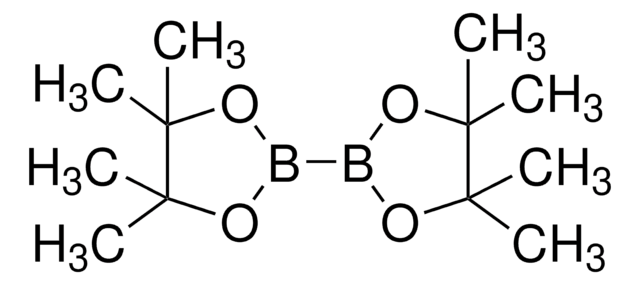
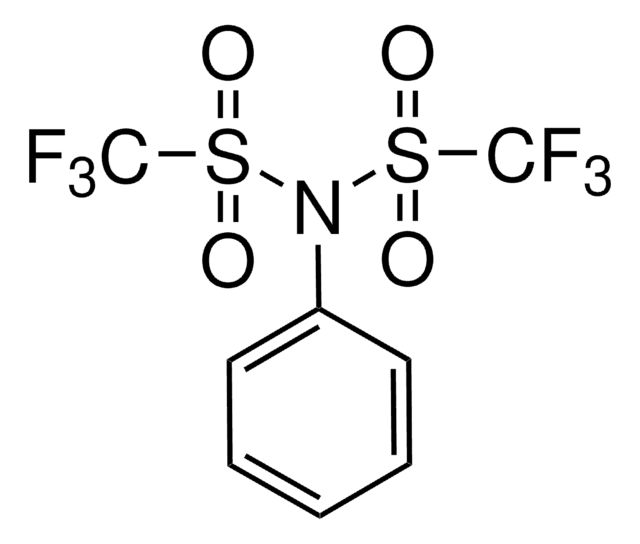
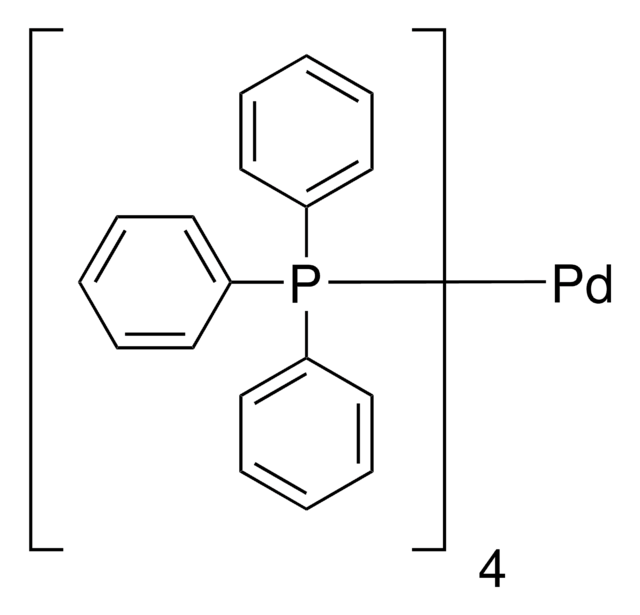
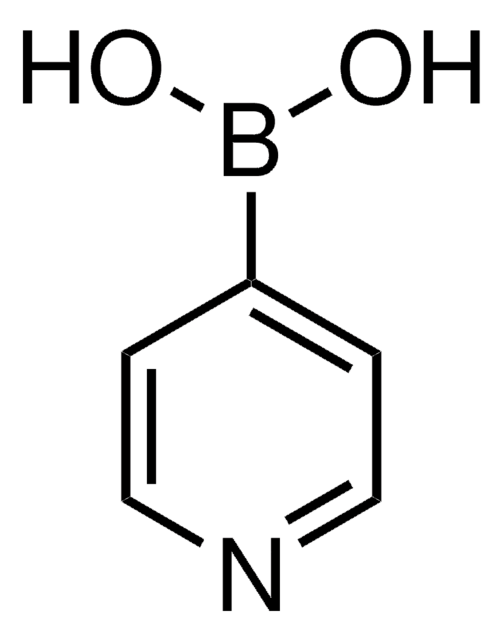
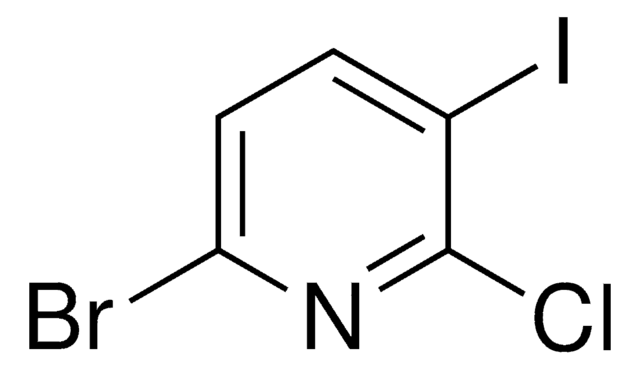
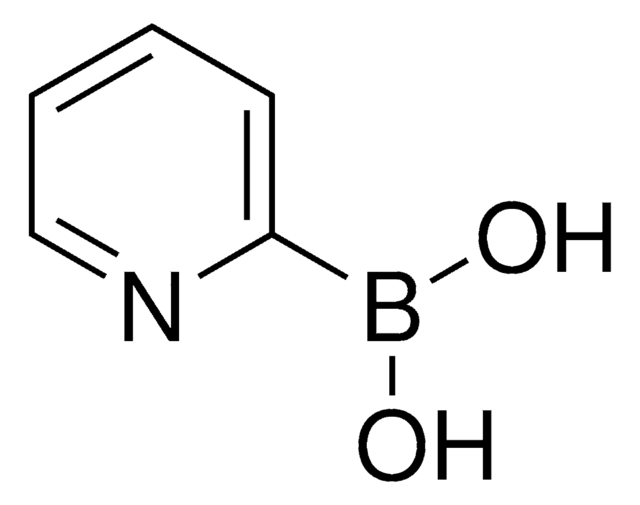
![[1,1′-Bis(diphenylphosphino)ferrocene]dichloropalladium(II), complex with dichloromethane](/deepweb/assets/sigmaaldrich/product/structures/825/986/4317978b-1256-4c82-ab74-6a6a3ef948b1/640/4317978b-1256-4c82-ab74-6a6a3ef948b1.png)
